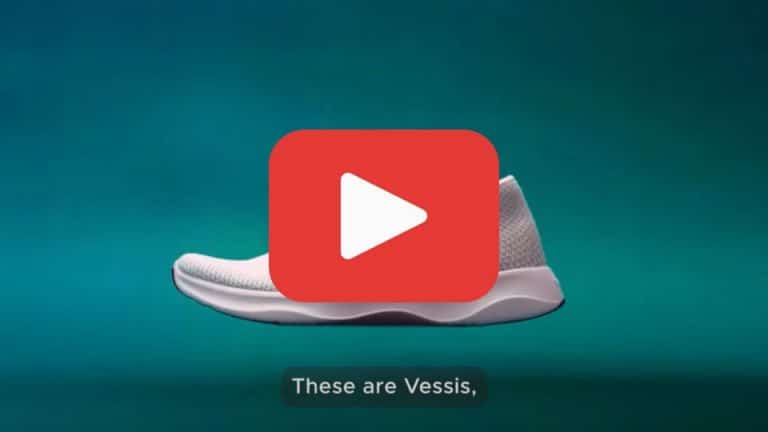In the ever-changing world of digital marketing, video content has become essential.
No longer an optional piece of a complete marketing strategy, video plays a significant role in helping your content connect with audiences and perform well on search engines.
This change is clear when we look at how social media platforms have evolved to prioritize videos. Platforms like Instagram and TikTok, with their focus on video content, have changed the way we engage online. But videos are not just popular on social media; they also tend to rank well in search engine results, offering more visibility than text alone.
Videos are especially useful for businesses when explaining complex products or services. They can simplify difficult concepts, making them more accessible to the audience. For example, explainer videos break down intricate tech products, and live video streams for product launches create real-time engagement.
For marketers, adapting to this video-centric landscape is crucial. In this guide, we will dig into how video marketing has evolved. This includes the variety of video types available, best practices for distribution, optimizing videos for SEO, creating interactive content, and using analytics to fine-tune your own video marketing strategies.
The Evolution of Video in Digital Marketing
Video marketing has undergone a significant transformation in recent years, moving away from old practices towards strategies that resonate better with today’s audience. Initially, video marketing was often direct and sales-centric. Videos typically featured overt product pitches, repetitive messaging, and a one-size-fits-all approach that prioritized reach over engagement. The production was usually basic, focusing more on the product than the experience or story behind it.
Old weight loss infomercials were notorious for taking a one-size-fits-all approach just to sell their product, like this example from MegaLoss:
Contrast this with today’s modern video marketing strategies, where storytelling takes center stage. Modern videos are about creating a narrative that connects with the viewer on an emotional level. For instance, instead of just showcasing a product, videos now tell a story about the lifestyle or values associated with using the product.
This example from Vancouver-based shoe brand Vessi does a great job of connecting with their audience on a deeper level by applying their waterproof product to a variety of everyday use cases:
Production quality has also seen a major upgrade. High-definition visuals, professional editing, and thoughtful cinematography are now the norm, even for smaller brands. This shift is partly due to the accessibility of better technology and tools.
Furthermore, authenticity is now a cornerstone of video content. Where once videos might have featured idealized versions of reality, modern marketing embraces diversity and real-world scenarios. Brands are now more focused on being relatable and trustworthy, rather than just showcasing their products.
These changes reflect the values and buying behaviors of the modern consumer, which are geared toward truly connecting with brands rather than being simply viewed as a dollar sign.
Types of Marketing Videos to Captivate an Audience
In video marketing, choosing the right format for your message is key. Different types of videos serve different purposes and can be a game-changer in how you connect with your audience.
1. How-To and DIY Videos
How-to videos provide step-by-step instructions or creative ways to use products or complete some kind of process. They are perfect for engaging audiences who are looking to learn and apply new skills or information. Utilize these videos when your goal is to educate your audience about your product’s functionality or to inspire creativity in its use.
2. Webinars
Webinars are detailed video sessions, often inclusive of Q&A segments. Ideal for in-depth exploration of topics, they suit B2B marketing or thought leadership roles. Use webinars to deliver substantial content, establish expertise, and engage a dedicated audience.
3. Brand Stories
Brand story videos narrate your company’s journey, values, and mission. They connect emotionally with the audience, making your brand feel more relatable and memorable. These videos are best used to tell your unique story, differentiate your brand, and build customer loyalty.
4. Testimonial Videos
Testimonial videos feature real customers discussing their experiences with your product or service. They build trust and credibility amongst new buyers, serving as a powerful form of social proof. Deploy these to showcase customer satisfaction and the real-world value of what you offer.
5. Interviews
Videos featuring interviews with industry experts, company leaders, or satisfied customers add depth and authenticity to your content. They are valuable resources for offering expert insights and highlighting customer experiences. Use these to share in-depth knowledge and enhance your brand’s credibility.
6. Company Culture Videos
These videos offer a glimpse into your company’s culture, showcasing your brand’s personality and values. Effective for humanizing your brand, they attract customers and employees who share similar values. Utilize these to strengthen your brand identity and foster personal connections with your audience.
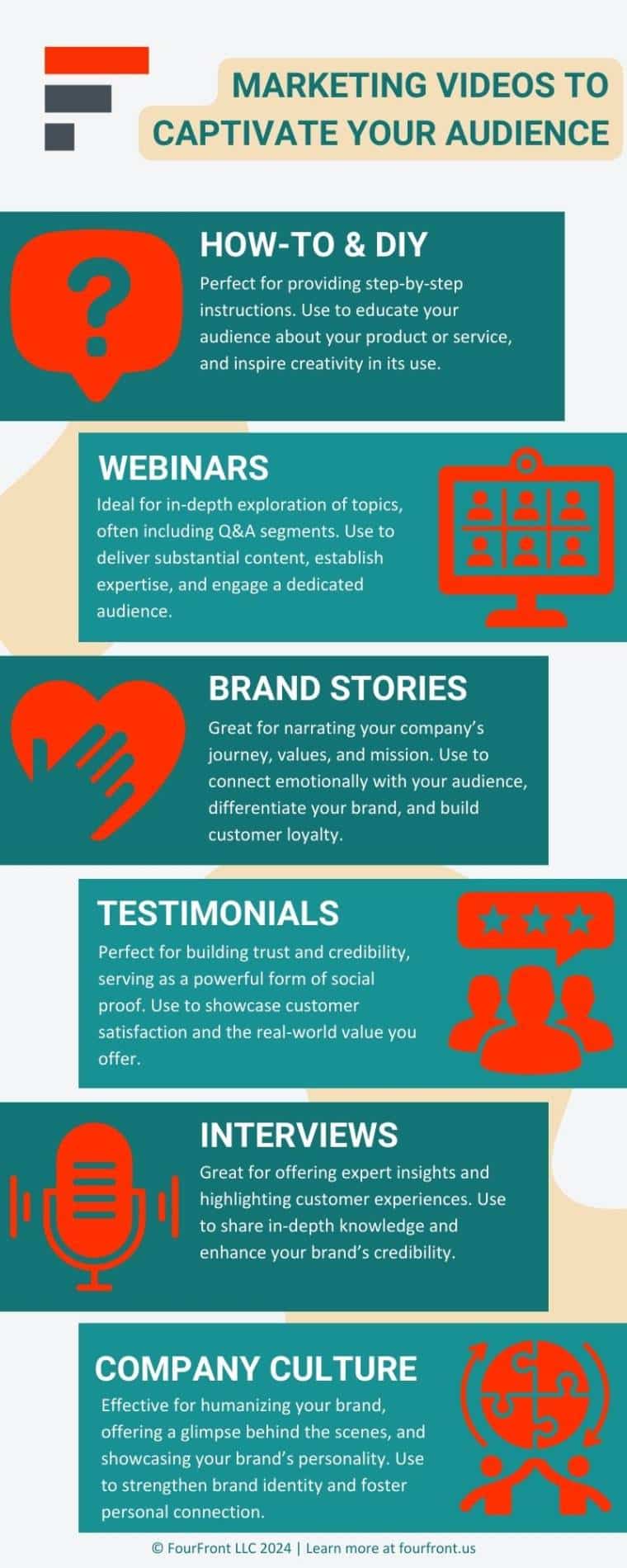
Video Distribution: How to Maximize Visibility and Engagement
Effectively distributing your video content is as crucial as creating it. In the next section, we will break down how to maximize your video’s visibility and engagement across various platforms.
Tactics for Promoting Videos Across Platforms
Social Media Channels
Each social platform has its unique audience and content style. Tailor your videos to fit the tone and format of each platform. On platforms like Instagram and TikTok, shorter, more visually engaging content works best. For LinkedIn, focus on professional and informative videos.
Video Hosting Sites
Platforms like YouTube are essential for long-form video content. Optimize your video titles, descriptions, and tags with relevant keywords for better SEO. Also, encourage viewer interaction through comments and shares.
Email Marketing
Integrate videos into your email campaigns. A video thumbnail with an engaging visual can significantly increase click-through rates. Keep the content relevant to the email topic and provide value to the viewer.
Tips on Timing, Targeting, and Paid Promotion
Timing
Release your videos when your audience is most active. This varies across platforms and audiences. Use analytics tools to determine the optimal posting times.
Targeting
Understand your audience demographics. Tailor your content and promotion strategies to their preferences and behaviors. Use platform-specific targeting tools to reach the right audience segments.
Paid Promotion
Consider using paid ads to extend your reach. Platforms like Facebook and Instagram offer targeted advertising options to help your content reach a broader, yet specific, audience.
SEO for Videos: Techniques to Improve Online Visibility
If you’re going to put the time and effort into creating high-quality, engaging, tailored video content (which you should), you should also make sure you’re employing some basic SEO techniques to make sure that your video content has optimal visibility on search engines like Google.
Keyword Optimization
Just like traditional SEO, keywords play a crucial role. Use relevant keywords in your video title, description, and tags. This helps search engines understand and rank your content effectively.
Tailoring Keyword Research for Video Content
- Identify Trends: Use tools like Google Trends to understand what your audience is searching for. Look for patterns and topics that are gaining popularity.
- Understand User Intent: Analyze the keywords to discern the reasons why the user is making their search – are they looking for information, a how-to guide, or product reviews? Tailoring your content to match this intent makes your video more likely to be clicked on and watched.
- Analyze Competitors: Look at what keywords competitors are targeting and how their videos are performing. This can provide valuable insights into what works in your niche and what you could potentially replicate.
Engaging Thumbnails
Your video’s thumbnail is usually the first thing viewers see. Make it visually appealing and relevant to the content. A compelling thumbnail can significantly increase click-through rates, and can be done using the following techniques:
- Use High-Quality Images: Ensure your thumbnail image is high resolution and clear. A blurry or pixelated image can deter viewers. Aim for a resolution of 1280×720 pixels, which is typically recommended for most video platforms.
- Incorporate Faces and Emotions: Thumbnails featuring close-ups of faces tend to perform well, especially if the facial expressions convey emotion relevant to the video content. This human element can make the thumbnail more relatable and engaging.
- Add Text Overlay: If appropriate, include a brief text overlay on your thumbnail. This text should complement the video title and be legible. Choose a font size and style that is easy to read and stands out against the background.
- Use Contrasting Colors: Utilize colors that contrast well to make your thumbnail pop and stand out in a sea of other videos. However, make sure the color scheme aligns with your brand’s style and the tone of the video.
- Showcase the Video’s Value: Your thumbnail should give a hint about the video’s content and why it is valuable or interesting. Whether it is a teaser, a surprising element, or a visual summary, make sure it aligns with the video’s core message.
- Avoid Misleading Clickbait: While it is important to create an eye-catching thumbnail, ensure it accurately represents the content of your video. Misleading thumbnails can lead to viewer disappointment and negatively impact your brand’s credibility.
- Test Different Thumbnails: Consider A/B testing different thumbnail designs to see which one gets a higher click-through rate. This can provide insights into what resonates best with your audience.
- Stay Consistent with Branding: Ensure your thumbnails maintain a consistent style that aligns with your branding. This consistency helps in building brand recognition over time.
Closed Captions (a.k.a. Subtitles)
Adding closed captions or subtitles improves accessibility and provides additional text for search engines to index. This can boost your video’s searchability and reach a wider audience.
Like alt text for images, closed captions are an accessibility feature first, and should never be stuffed with keywords or compromised for the sake of SEO. As with any SEO decision, always prioritize the user experience over playing to the search engine.
Types of Videos in SERPs
I mentioned earlier that we are seeing videos performing increasingly well in the SERP (Search Engine Results Page). Not every search query is going to be a great fit for video content (see: search intent) but on those searches for which we are seeing video results, we see them appearing in a few different ways:
DIY Videos: These often appear at the top of SERPs, especially for searches that involve how-to queries or tutorials.
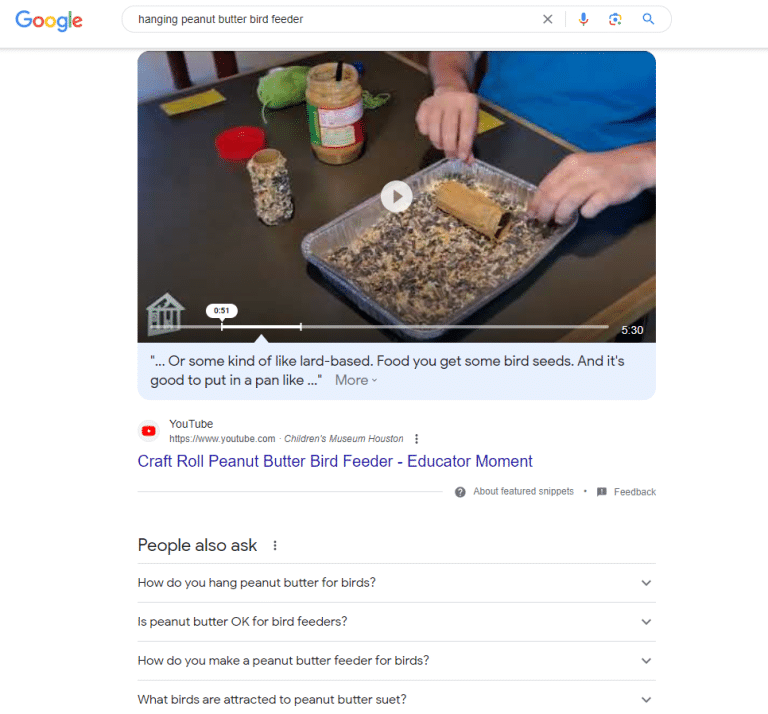
Video Blocks: Sometimes, search engines display a block of video results further down the page. These are usually a mix of informative and commercial content.
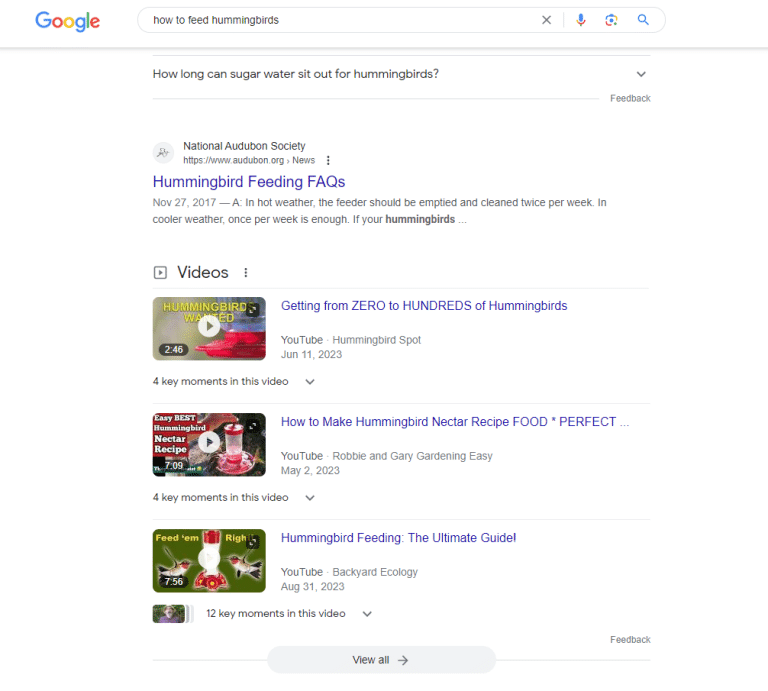
Rich Snippet Videos: Videos can also appear as part of rich snippets in listings. These are often used to highlight specific information, like a recipe or a quick tutorial, directly in the search results.
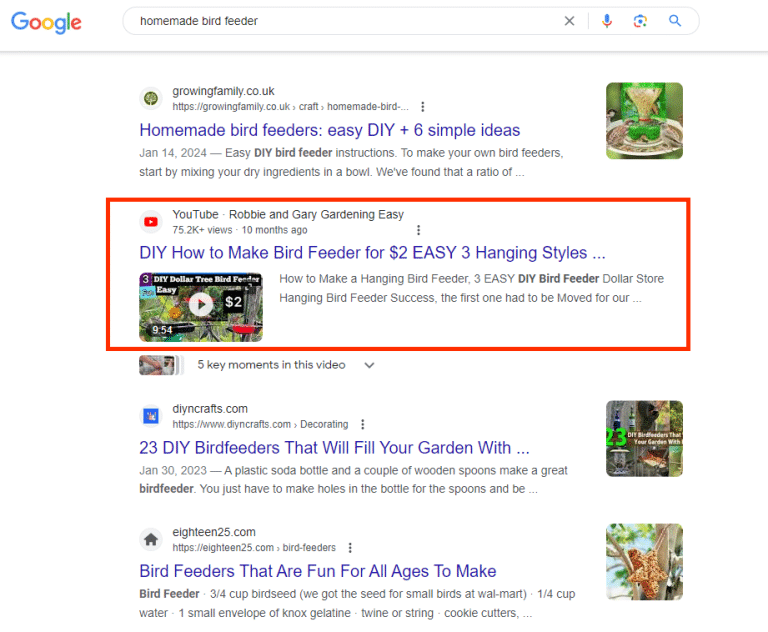
For each type, considering the intent and relevance of your video content is key to securing a spot in these varied SERP formats.
A disclaimer: These are the types of video results we are commonly seeing as of the creation of this blog post in January 2024. However, any good SEO will tell you that the SERPS are constantly changing – especially with the introduction of AI in search results like Google’s SGE. I would bet that we will continue to see video results grow and change as does the importance of this medium in digital marketing. Keep your eye on the SERPs, and think creatively and critically about the purpose behind the different types of results.
Interactive Video Content: Engaging Viewers in a Two-Way Conversation
Interactive video content is revolutionizing how audiences engage with videos, transforming passive viewing into an active experience. We will next explore how to effectively use interactive elements and design content with conversions in mind.
Incorporating Interactive Elements in Videos
- Polls and Surveys: Embedding polls and surveys in your videos, especially on platforms like YouTube, can significantly increase viewer engagement. These tools can be used to gather feedback, understand viewer preferences, or simply make the viewing experience more engaging. Make sure these polls are relevant to the video content and easy to participate in.
- Calls to Action (CTAs): Use clear and compelling CTAs within your video. This could be a verbal call to action, a clickable button, or a graphic. Position your CTA strategically—either in the middle of the video for high engagement points or at the end to capture interested viewers.
- Clickable Links: Utilize YouTube’s cards and end screens to add clickable links in your videos. These can direct viewers to other videos, playlists, or external websites. Use them to guide viewers through your content funnel or to your conversion pages.
Designing Video Content for Conversions
- Storytelling: Craft a narrative that resonates with your audience. Good storytelling can captivate viewers and lead them naturally to your call to action. Stories can be customer testimonials, a day in the life of a user, or a narrative showcasing your product solving a problem.
- Problem-Solving: Address common problems or pain points that your target audience faces. By presenting your product or service as a solution, you can create a compelling reason for viewers to act.
- Persuasive CTAs: Your CTA should be clear, persuasive, and relevant to the content of the video. Use action-oriented language and create a sense of urgency or value. For instance, “Sign up today for a free trial” or “Get your exclusive discount now.”
Best Practices for Featuring Videos on Websites
Strategically placing videos on your website can enhance user engagement and provide valuable information in an easily digestible format. Here is how to effectively feature videos in different areas of your site:
- Homepage Videos: Feature an engaging video on your homepage that encapsulates your brand or primary value proposition. This can be an overview of your services, a brand story, or a customer testimonial. Ensure it auto-plays silently with an option for sound to avoid disrupting the user experience.
- Product Pages: Incorporate product demo videos or customer testimonials on product pages. These videos should be specific to the product, highlighting its features, benefits, and use cases.
- Dedicated Video Resource Centers: It’s best practice to have a central directory on your website that houses all of your video content, especially educational videos. This not only makes it easier for users to find your videos, but also keeps them engaged on your site for longer periods.
- Optimization for Load Time: Ensure that videos on your site are optimized for quick loading. Slow-loading videos can increase bounce rates and negatively impact user experience. One of my favorite tricks is to embed a preview image with a play button that opens the video when clicked, rather than embedding the video itself in the body of the page. You can see an example of what this looks like above, in my examples of the weight loss video vs. Vessi’s.
Utilizing Analytics to Fine-Tune Your Video Marketing Strategy
In the digital marketing world, data is king. Utilizing analytics effectively can transform your video marketing strategy, making it more efficient and aligned with your marketing goals. Here is a quick guide to setting up and interpreting analytics for your video content.
Setting Up Analytics for Video Marketing
- Choose the Right Tools: Start by selecting analytics tools that integrate well with your video platforms. Tools like Google Analytics, YouTube Analytics, or specialized video marketing platforms offer detailed insights.
- Establish Key Metrics: Focus on metrics like view count, watch time, engagement rate (likes, shares, comments), and click-through rate (CTR) for CTAs. These metrics give you a clear picture of how your videos are performing.
- Set Up Goals: Define what success looks like for your video marketing campaign. This could be increasing brand awareness, lead generation, or direct sales. Tailor your analytics to measure these specific objectives.
Interpreting Viewer Engagement Data
- Analyze View Count and Watch Time: These metrics help you understand the reach of your video and how engaging it is. A high number of views but low watch time can indicate that your content is not holding the viewer’s interest.
- Engagement Rate Analysis: High engagement (likes, shares, comments) suggests that your content resonates with your audience. Pay attention to what types of content are getting more engagement and replicate those elements in future videos.
- CTR for Calls to Action: The CTR (click-thru rate) on your CTAs will tell you how effectively your video is driving the desired action. Low CTRs might indicate a need to make your CTAs more compelling or visible.
Leveraging FourFront’s Analytical Capabilities
So, what if you are one of the many marketers out there who isn’t also an analytics wizard? Partnering with FourFront offers access to our advanced analytical tools and expertise. Our capabilities allow you to:
- Measure Results Precisely: We can provide precise tracking and reporting on all key performance indicators (KPIs) relevant to your video content.
- Gain Actionable Insights: Beyond basic metrics, we can provide a closer look into viewer behavior patterns, helping you understand why certain content performs better and how to replicate that success.
- Optimize Across Platforms: We can help you adjust your video content and strategy across different platforms based on the specific analytics and trends of each channel.
By utilizing analytics effectively, you can fine-tune your video marketing strategy, ensuring your content not only reaches but also engages your target audience, aligning perfectly with your marketing goals.
With FourFront’s analytical expertise, you will be equipped to optimize your video content across the internet, ensuring the best possible results for your campaigns.



